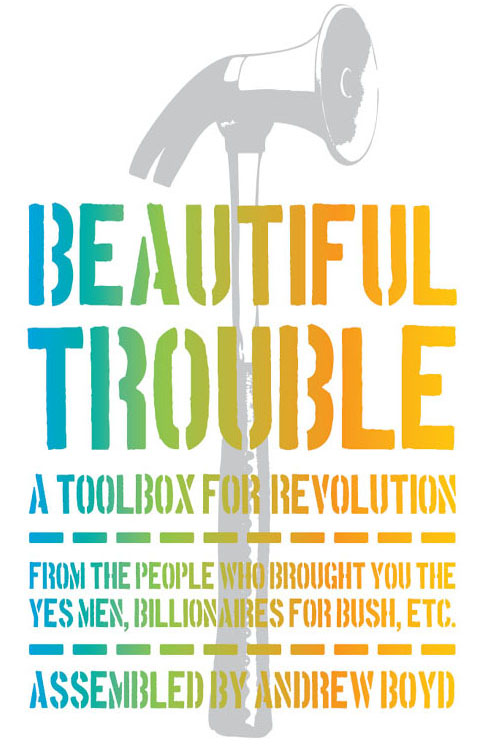Armin Medosch: Automation, Cybernation and the Art of New Tendencies, 1961-1973 (2012)
Filed under thesis | Tags: · 1960s, 1970s, art, art history, computer art, computing, cybernetics, informational capitalism, media art, politics, technology, yugoslavia
“My research investigates exhibitions as sites of research and appraises the possibilities and contradictions of a progressive and socially engaged media art practice. The international art movement New Tendencies (NT) (1961-1973) provides the material evidence through its exhibitions, symposia, artworks, catalogues, newsletters and artist’s statements. The basic methodological assumption behind my research is that new insights are gained by questioning the various interdependencies between NT and historical change.
NT was searching for a synthesis between socialist emancipation and artistic modernism by proposing to replace the notion of art with visual research. The project emerged in Zagreb, capital of Croatia which was then part of Yugoslavia, a Socialist nation which did not belong to the Eastern bloc and experimented with market Socialism combined with social self-management and self-government. Yugoslavia’s unique role between the hegemonic power blocs made it possible that an international, humanistic, and progressive art movement could emerge from its territory.
With every exhibition and conference NT articulated its artistic position and set itself into relation with the respective techno-economic paradigm. NT began during the height of Fordism, continued during Fordism’s moment of crisis in 1968, and ended when a new paradigm – informational capitalism – started to develop from within the old one. In this historical context, my hypothesis is that NT’s exploration of participatory art stands in direct relation to the rise of automation and cybernation in society. A further layer of inquiry is the historically changing relationship between manual and intellectual labour and how art addresses it.
By contextualising NT my research contributes a new dimension to the history of media art. Through the chosen methodology, a new understanding is gained not only of this important art movement but of the general dynamics of media art in the second half of the 20th century.” (Abstract)
Doctoral thesis
Arts and Computational Technology, Goldsmiths, University of London
369 pages
PDF, PDF (updated on 2015-7-12)
Comment (0)Continent. journal, No. 1-7 (2011-2012)
Filed under journal | Tags: · art, culture, film, media studies, philosophy, poetry, politics, sound recording, theory
Continent. maps a topology of unstable confluences and ranges across new thinking, traversing interstices and alternate directions in culture, theory, politics and art.
Continent. exists as a platform for thinking through media. text, image, video, sound and new forms of publishing online are presented as reflections on and challenges to contemporary conditions in politics, media studies, art, film and philosophical thought.
Contributors to issue 2.3: François Laruelle, Andy Weir, Henrik Lübker, Berit Soli-Holt & April Vannini & Jeremy Fernando, Andrea Fraser, Sean Gurd, Paul Amitai, Sasha Ross, Thierry Geoffroy.
Contributors to issue 2.2: Vilém Flusser, Bonnie Jones, Eugene Thacker, Gary J. Shipley and Nicola Masciandaro, Vincent W.J. van Gerven Oei, Sean Joseph Patrick Carney, The Editors of Speculations & continent., Ishac Bertran, Duane Rousselle, A. Staley Groves.
Editors: Jamie Allen, Paul Boshears, Nico Jenkins
Creative Commons Attribution 3.0 License
ISSN 2159-9920
Download issue 2.3 (single PDF)
Download issue 2.2 (single PDF)
View issue 2.3 (HTML and PDF articles)
View issue 2.2 (HTML and PDF articles)
View back issues (HTML and PDF articles)
Andrew Boyd (ed.): Beautiful Trouble: A Toolbox for Revolution (2012)
Filed under book | Tags: · activism, art, debt, hacking, occupy movement, politics, protest, revolution, self-organization, social movements, tactical media, theory

“From Cairo to cyberspace, from Main Street to Wall Street, today’s social movements have a creative new edge that’s blurring the boundaries between artist and activist, hacker and dreamer. But the principles that make for successful creative action rarely get hashed out or written down.
Until now.
Beautiful Trouble brings together ten grassroots groups and dozens of seasoned artists and activists from around the world to distill their best practices into a toolbox for creative action. Among the groups included are Agit-Pop/The Other 98%, The Yes Men/Yes Labs, Code Pink, SmartMeme, The Ruckus Society, Beyond the Choir, The Center for Artistic Activism, Waging Nonviolence, Alliance of Community Trainers and Nonviolence International.”
Contributors include Rae Abileah, Ryan Acuff, Celia Alario, Phil Aroneanu, Peter Barnes, Jesse Barron, Andy Bichlbaum, Nadine Bloch, Kathryn Blume, L.M. Bogad, Josh Bolotsky, Mike Bonanno, Andrew Boyd, Kevin Buckland, Margaret Campbell, Doyle Canning, Samantha Corbin, Yutaka Dirks, Steve Duncombe, Mark Engler, Simon Enoch, Jodie Evans, John Ewing, Brian Fairbanks, Bryan Farrell, Janice Fine, Lisa Fithian, Cristian Fleming, Elisabeth Ginsberg, Stan Goff, Arun Gupta, Silas Harrebye, Judith Helfand, Daniel Hunter, Sarah Jaffe, John Jordan, Dmytri Kleiner, Sally Kohn, Steve Lambert, Anna Lee, Stephen Lerner, Zack Malitz, Nancy Mancias, Duncan Meisel, Matt Meyer, Dave Oswald Mitchell, Tracey Mitchell, George Monbiot, Brad Newsham, Gaby Pacheco, Mark Read, Patrick Reinsborough, Simon Roel, Joshua Kahn Russell, Leonidas Martin Saura, Levana Saxon, Maxine Schoefer-Wulf, Nathan Schneider, Kristen Ess Schurr, John Sellers, Rajni Shah, Brooke Singer, Matt Skomarovsky, Andrew Slack, Phillip Smith, Jonathan Matthew Smucker, Starhawk, Eric Stoner, Jeremy Varon, Virginia Vitzthum, Harsha Walia, Jefferey Webber and the Coalition of Immokalee Workers.
Assembled with Dave Oswald Mitchell
Publisher OR Books, New York/London, June 2012
Creative Commons Attribution-NonCommercial-ShareAlike 3.0 Unported License
ISBN 9781935928577
474 pages
Book website
Kickstarter page
Editor
Publisher
PDF (updated on 2024-2-18)
EPUB (added on 2024-2-18)
HTML

